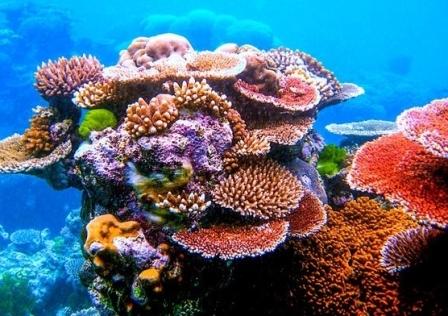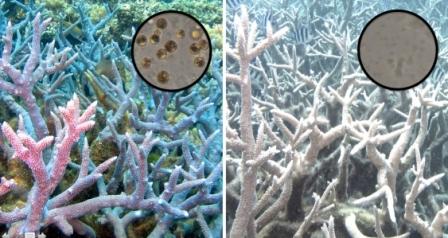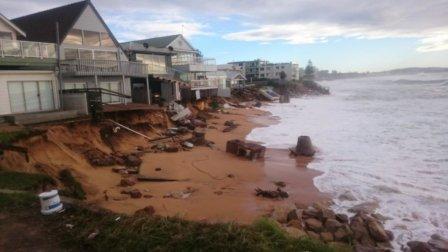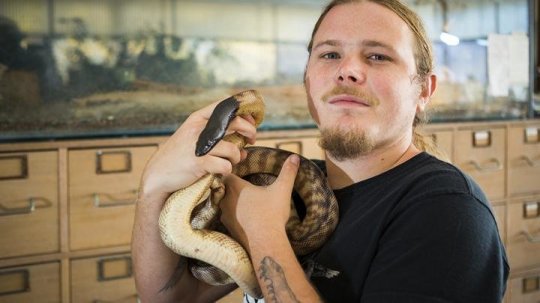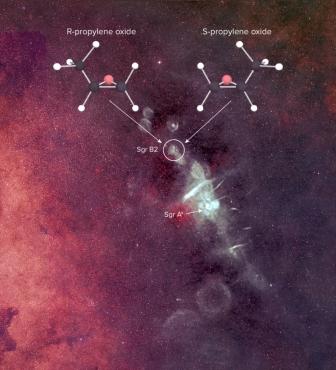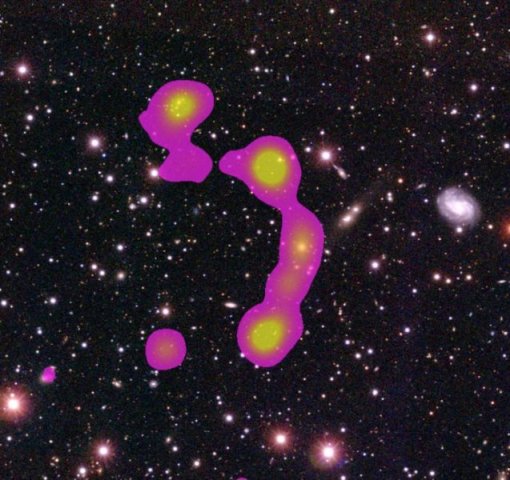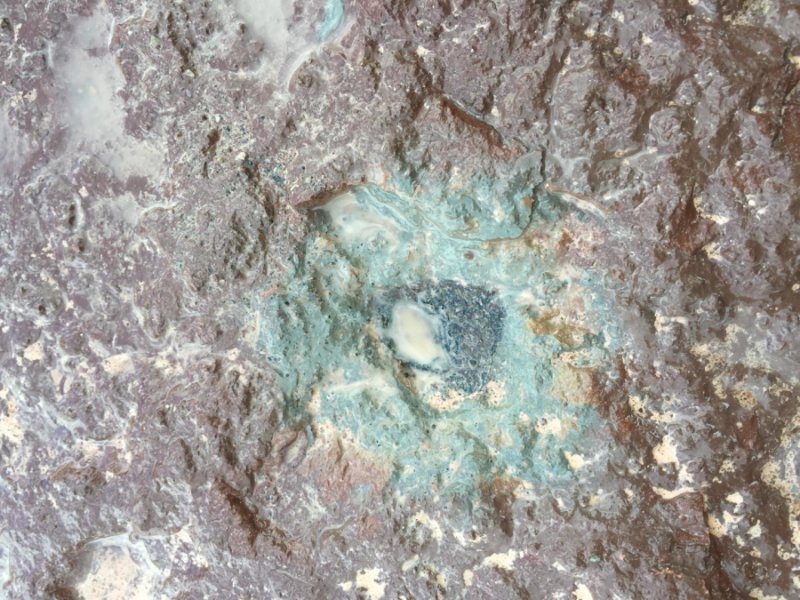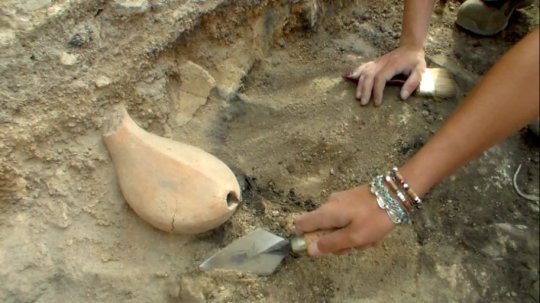Danger from extreme storms, high seas to rise, warn Australian researchers - Storms that battered Australia's east coast are a harbinger of things to come
June 8 and June 14, 2016: University of New South Wales
Damaged homes along the foreshore of Sydney's Collaroy Beach, hit by powerful storms in early June. Credit: Mitchell Harley/UNSW
Storms that battered Australia's east coast are a harbinger of things to come and a stark reminder of the need for a national effort to monitor the growing threat from climate change, UNSW coastal researchers warn.
"The damage we've seen is a harbinger of what's to come," said Ian Turner, Director of the
Water Research Laboratory at the University of New South Wales. "Climate change is not only raising the oceans and threatening foreshores, but making our coastlines much more vulnerable to storm damage. What are king high tides today will be the norm within decades."
Turner's lab manages one of the world's longest-running beach erosion research programs, at Collaroy and Narrabeen in Sydney, using drones, real-time satellite positioning, fixed cameras, and airborne LiDAR and quadbikes. The variability, changes and trends in coastal erosion at the beaches have been tracked since 1976.
But the data collected by the UNSW team is only reliable for modelling when it comes to predicting effects in southeastern Australia. For the vast bulk of Australia's 25,760 km long coastline, researchers -- and the governments and coastal communities they advise -- are largely making guesses based on limited or non-existent data, say researchers.
"The wealth of data we've collected over decades makes our models of coastal variability increasingly more reliable -- but only for a 500 km stretch of southeastern Australia," Turner added. "But when it comes to modelling other parts of Australia, in many locations we are basically working blind.
"There are very different coasts across the country exposed to very different conditions, and we just don't have the observational data we need to make predictions with any great confidence," he said. "For that, we need a national approach."
The long-term data from the UNSW program has been crucial in understanding how climate change is changing Australia's coasts, recently showing that El Niño and La Niña cycles will intensify coastal hazards, leading to changes in behaviour of storms, extreme coastal flooding and erosion in populated regions across the Pacific.
As a result, estimates of coastal vulnerability -- which once focussed on sea level rise -- now have to factor in changing patterns of storm erosion, more intense storms, and other coastal effects.
Dr Mitchell Harley, a Senior Research Associate at the Lab who manages the Narrabeen-Collaroy program, said that beach erosion and coastal variability has been found to be a lot more complex than had originally thought, partly thanks to insights from the UNSW data.
"It's now clear that sea level rise is not the only player in climate change: shifts in storm patterns and wave direction also have consequences, and distort or amplify the natural variability of coastal patterns," Harley said.
Turner added, "These are precisely the conditions we experienced in Sydney over the past weekend -- waves from the north-east, combined with unusually high sea levels brought on by king tides wreaked considerable damage. And, as sea levels rise, even ordinary tides will reach higher. What we consider king high tides today will be commonplace within decades."
In 2014, Australian coastal researchers called for the creation of a national coastline observatory, with basic data -- such as sub-aerial profiles, bathymetry and inshore wave forcing measurements -- collected routinely from a network of around 20 'representative' beaches across Australia.
This would provide valuable data that could be used to more accurately model how Australia's more than 11,000 beaches are changing, and predict how they will respond as climate change sets in.
The long experience gained by UNSW in Sydney's Northern Beaches "gives us a template of what can be achieved across Australia," said Turner. "But without consistent and national observational data -- from very different regions like the tropical north, or the highly energetic southwestern coastlines, or the Indian Ocean coastlines of Western Australia -- it's of little value. To say we have blindspots is an understatement."
Harley agreed, adding: "For the great majority of Australia's coastlines, we don't have observations for how they are behaving now -- let alone any clear idea how they might respond to increasing variability in the future. We see it happening at Narrabeen-Collaroy, and can therefore predict it for this part of Australia. But elsewhere, we're largely operating in the dark."
Pre storm data collected by the WRL coastal team and collaborators include:
- Shoreline positions measured remotely every 30 minutes by the of Narrabeen-Collaroy coastal imaging station;
- Airborne LiDAR surveys at 20 critical and sites located between Sydney and Coffs Harbour (undertaken four days prior to storm by the UNSW School of Aviation);
- High-density UAV (drone) point-cloud data of the entire Narrabeen-Collaroy embayment, including the dunes and beach face;
- RTK-GPS cross-shore profiles at long-term monitoring locations (Narrabeen-Collaroy, Bilgola, Mona Vale and Dee Why);
- Three-dimensional survey of the entire Narrabeen Collaroy embayment using an All-Terrain-Vehicle mounted with RTK-GPS;
- High-frequency LiDAR scans of a single transect located in front of the Flight Deck Building at Narrabeen;Offshore bathymetry measurements using a jet-ski at Narrabeen-Collaroy, Bilgola and
- Mona Vale beaches (undertaken by the NSW Office of Environment and Heritage); and
- Nearshore deployment of WRL’s mini waverider buoy by OEH in 10m water depth in front of the Flight Deck Building at Collaroy.
During the storm event, WRL’s coastal monitoring team were quick to utilise all available datasets for real-time assessment of the rapidly evolving beach conditions. When the extreme conditions subsided, it was found that the beach shifted an incredible 50m in width due to the storms, which is the most eroded in 40 years of measurements.
The above is reprinted from materials provided by University of New South Wales. The original item was written by Wilson da Silva.
Call to end elder abuse
15 June, 2016
Minister for Ageing John Ajaka today called on the NSW community to be more aware of elder abuse, and to report and stop it.
To mark World Elder Abuse Awareness Day, Mr Ajaka visited the NSW Elder Abuse Helpline and Resource Unit, as well as visited CORE Aged and Disability Care in Fairfield to announce the winners of the Talking Elder Abuse art competition.
“The abuse of older people is utterly intolerable. Sadly, the evidence tells us older people are often abused by those who are meant to be closest to them – their family,” Mr Ajaka said.
“It’s up to all of us to identify it and to play our part to help put an end to it for good.”
The NSW Elder Abuse Helpline is a state-wide, confidential and free-call service that provides information, advice and referrals for people experiencing or concerned about elder abuse.
The Helpline was a key initiative of the first NSW Ageing Strategy, and has received more than $2 million in NSW Government support since March 2013.
Since 2013, the Helpline has received more than 4,500 calls from people across NSW. Most calls relate to psychological or financial abuse and neglect.
The NSW Government recently announced a $60,000 funding boost for the Helpline to expand the ‘train the trainer’ program’, which gives managers in community service organisations the skills and knowledge to train their own staff in preventing and responding to elder abuse.
Anyone who witnesses, experiences or suspects elder abuse should call the Elder Abuse Helpline on 1800 628 221.
NSW budget: new health, education, jobs and training services for social housing families
14 June, 2016
Generational disadvantage in social housing is being targeted with new Budget measures to improve people’s lives, starting from before babies come home from hospital.
“Social housing can be more than just a roof over people’s heads, it can also give people a chance to make a better life for themselves and their children,” said Minister for Family and Community Services and Social Housing Brad Hazzard.
“Social housing in NSW is going through the biggest reforms in 40 years, with our huge redevelopment and renewal program of old estates.
“We are investing in social housing properties and in the people who live in social housing,” Mr Hazzard said.
Treasurer Gladys Berejiklian said the NSW Government was keen to boost jobs and training options for people in social housing.
“NSW has experienced outstanding jobs growth and we want people in social housing to benefit from our strong economy with real training, real jobs and better futures.”
The NSW Government will spend a total of $280 million over the next four years under reforms outlined in the Future Directions strategy for social housing, including the following new initiatives:
- Home Visiting to Mothers and Babies ($4 million over four years) for nurse home visiting to improve child development and assist with the co-ordinated care of vulnerable and at-risk families.
- Early childhood services ($2 million seed funding) to improve opportunities for children in social housing to access early childhood education and services as pre-school years are critical for a child’s well-being and school readiness.
- Scholarships ($3.2 million over four years) to extend the scholarships program for Year 12 students to students also entering Year 10 and provide mentoring and support services to scholarship recipients. These scholarships aim to improve student’s access to higher education as children from low socio-economic backgrounds are only one third as likely as children from higher socio-economic backgrounds to go onto higher education.
- Pathways to Jobs (more than $4 million over four years) will assist about 1100 disadvantaged social housing job seekers with a specialised jobs service providing free, voluntary and individualised service.
- Careers in Caring ($1.2 million over four years) for 150 social housing tenants to receive tailored training, support and work places in the community, disability and aged care sectors.
For more information:
Pythons and boas shed new light on reptile evolution
Damien Esquerre with a python. Credit: Stuart Hay, ANU
June 14, 2016
A new study into pythons and boas has for the first time found the two groups of snakes evolved independently to share similar traits, shedding new light on how the reptiles evolved.
Pythons and boas are two families that include the largest snakes in the world, like the reticulated python and the anaconda boa, which have been known to grow close to eight meters in length.
The Australian National University (ANU) study found that by living in the same habitat, pythons and boas evolved independently to look similar. This happened at least five times in different habitats. Aquatic pythons look like aquatic boas, burrowing pythons look like borrowing boas and tree-dwelling pythons look like tree-dwelling boas.
Lead researcher Damien Esquerre said the study found pythons and boas were an important example of convergent evolution in reptiles. Convergent evolution is where species adapt to the same conditions and evolve similar traits.
"The finding of such a strong case of convergent evolution demonstrates the power of natural selection and adaptation in living organisms," said Mr Esquerre from the ANU Research School of Biology.
"If we see that different groups evolve the same things independently when they face the same challenges, we can find predictability in evolution."
Other famous examples of convergent evolution are sharks and dolphins, which are not related but have evolved similar body plans. Similarly, the extinct Tasmanian Tiger, a marsupial mammal, and the wolf, a placental mammal, evolved similar body plans.
Although they look the similar and both constrict their prey, the pythons and boas last shared a common ancestor 70 million years ago in the age of the dinosaurs.
The research focused on the head shape of close to 2,000 specimens in museum collections in Australia and America.
Mr Esquerre said not all evolution was driven by natural selection, but examples such as pythons and boas reinforce its importance in shaping biological diversity.
"By having greater understanding of the evolution of pythons and boas, researchers can now have better ideas of what extinct fossil snakes were doing before they disappeared," he said.
Damien Esquerré, J. Scott Keogh.
Parallel selective pressures drive convergent diversification of phenotypes in pythons and boas.Ecology Letters, 2016; 19 (7): 800 DOI:
10.1111/ele.12620Parkes telescope detects key feature of life outside our solar system
June 15, 2016
Research with CSIRO's Parkes telescope has discovered the first molecule in space that has a key attribute associated with life - 'handedness' or chirality.
Scientists applaud the first detection of a ‘handed’ molecule, (propylene oxide) in interstellar space.© B. Saxton, NRAO/AUI/NSF from data provided by N.E. Kassim, Naval Research Laboratory, Sloan Digital Sky Survey.
The breakthrough is expected to help scientists solve one of the greatest mysteries in biology – the origin of homochirality - and offer insights into what we can expect from life throughout the universe.
The finding is being announced at a meeting of the American Astronomical Society today and will appear in the journal Science.
Like your two hands, many molecules can exist in forms that are mirror images of each other.
But molecules associated with life, such as amino acids, proteins, enzymes and sugars, are found in nature in only one form.
For example, the amino acids that make up proteins only exist in the left-handed form, while the sugars found in DNA are exclusively right-handed. This phenomenon is known as homochirality.
"Understanding how this came about is a major puzzle in biology," Director of Operations at CSIRO Astronomy and Space Science, Dr John Reynolds said.
Chiral molecules are essential to biology on Earth, but until now they hadn't been known to exist outside our own solar system.
Now for the first time a 'handed' molecule, propylene oxide, has been detected in space with the Parkes telescope and the Green Bank Telescope in the USA.
"This discovery gives us a window into how an incredibly important type of molecule is made in space, and gives us the chance to understand the impact that process may have on life in the universe," Dr Reynolds said.
Propylene oxide is a common compound used in making polyurethane plastics.
The chemical was found in a region near the centre of our Milky Way galaxy in an interstellar cloud, Sagittarius B2, that is actively forming stars.
An Australian finding two decades ago suggested how the light from a forming star could 'bias' the molecules in space around it, leading to one of the handed forms being more common than the other.
The detection of propylene oxide was led by Brett McGuire (US National Radio Astronomy Observatory) and P. Brandon Carroll (California Institute of Technology).
Parkes discovered its first interstellar molecule, HCHS (thioformaldehyde), in 1971, and went on to find others.
B. McGuire & P.B. Carroll et al.
Discovery of the interstellar chiral molecule propyleneoxide (CH3CHCH2O). Science, 2016 DOI:
10.1126/science.aae0328Writing their name in the stars: Citizen scientists discover huge galaxy cluster
A radio contour overlay showing the newly discovered Matorny-Terentev Cluster RGZ-CL J0823.2+0333. Credit: Banfield et al./SDSS
June 13, 2016
Two volunteer participants in an international citizen science project have had a rare galaxy cluster that they found named after them.
The pair pieced together the huge C-shaped structure from much smaller images of cosmic radio waves shown to them as part of the web-based program Radio Galaxy Zoo.
The discovery surprised the astronomers running the program, said the lead author of the study Dr Julie Banfield of the ARC Centre of Excellence for All-sky Astrophysics (CAASTRO) at The Australian National University (ANU).
"They found something that none of us had even thought would be possible," said Dr Banfield.
More than 10,000 volunteers have joined in with Radio Galaxy Zoo, classifying over 1.6 million images from NASA's Wide-Field Infrared Survey Explorer telescope and the NRAO Very Large Array in New Mexico, USA.
"The dataset is just too big for any individual or small team to plough through -- but we have already reached almost 60% completeness" said Dr Banfield.
The project is led by Dr Banfield and Dr Ivy Wong who is based at the International Centre for Radio Astronomy Research (ICRAR) at The University of Western Australia.
"Although radio astronomy is not as pretty as optical images from the Hubble space telescope, people can find cool things, like black holes, quasars, spiral galaxies or clusters of galaxies."
The astronomers classified the newly-discovered feature as a wide angle tail (WAT) radio galaxy, named for the C-shaped tail shape of highly energetic jets of plasma which are being ejected from it.
It is part of a previously unreported sparsely-populated galaxy cluster and one of the biggest ever found.
Their discovery has now been published in the Monthly Notices of the Royal Astronomical Society with the two volunteers included as co-authors.
"This radio galaxy might have had two distinct episodes of activity during its lifetime, with quiet times of approximately 1 million years in between." said Radio Galaxy Zoo science team member and co-author Dr Anna Kapinska, also of CAASTRO / ICRAR at the University of Western Australia.
But the discovery of the Matorny-Terentev Cluster RGZ-CL J0823.2+0333, now bearing the names of the two citizen scientists, means even more than having added another piece to our cosmic puzzle.
While the unusual, bent shape of WATs has proven an excellent beacon for the detection of galaxy clusters, it will always be difficult to be detected by algorithms -- which is where citizen science can play a huge part.
Through big projects such as Radio Galaxy Zoo, citizen science has established itself as a powerful research tool for astronomy, especially looking at the future challenges such as the EMU survey in Australia -- the "Evolutionary Map of the Universe" with the Australian Square Kilometre Array Pathfinder (ASKAP) -- and MeerKAT MIGHTEE in South Africa.
"Expanding on projects such as Radio Galaxy Zoo or on machine-learning techniques will be key to finding these unusual structures and to studying galaxy clusters." said Dr Banfield.
J. K. Banfield, H. Andernach, A. D. Kapińska, L. Rudnick, M. J. Hardcastle, G. Cotter, S. Vaughan, T. W. Jones, I. Heywood, J. D. Wing, O. I. Wong, T. Matorny, I. A. Terentev, Á. R. López-Sánchez, R. P. Norris, N. Seymour, S. S. Shabala, K. W. Willett.
Radio Galaxy Zoo: discovery of a poor cluster through a giant wide-angle tail radio galaxy. Monthly Notices of the Royal Astronomical Society, 2016; 460 (3): 2376 DOI:
10.1093/mnras/stw1067The myth of generational differences at work
14 June 2016: University of Sydney
Research dispels the myth of 'generational warfare'.
Laziness and narcissism are traits consistently associated with Generation Y. Dr Steven Hitchcock from the Business School, has found young professionals in the advertising industry are reluctant to see themselves in terms of generational differences.
Laziness and narcissism are traits consistently associated with Generation Y, particularly in the workplace. New research gives space to the Gen Y and Millennial voices, too often lost in debate over generational categorisation.
Author of the research, Dr Steven Hitchcock from the University of Sydney Business School, found young professionals in the advertising industry are reluctant to see themselves in terms of generational differences, preferring to be defined by their personalities.
The research shows younger staff members don’t see the relationship they have with baby boomer colleagues as competitive.
Interviewing approximately 30 young professionals in Sydney’s advertising industry, Dr Hitchcock said his doctoral dissertation contrasts with reports workplaces are divided into generational groups.
“Young professionals don’t identify with a generation, nor did they see themselves as a distinct group,” Dr Hitchcock said.
“Why would we want to ‘manage generations’ if young workers don’t see themselves that way?”
One of the participants told Dr Hitchcock behaviour is more important than generation or age: “I think it’s more about the way you present yourself and your attitudes towards the job that has more impact on anyone that age.”
Shedding the Gen Y stereotype
Averaging 27 years of age, the participants were highly aware of how others in the workplace perceived them as a generational group.
“Young people are not dupes,” Dr Hitchcock said. “Many young professionals actively and strategically chose to identify themselves as not belonging to Gen Y or Gen Z because of the stereotypes associated with these categories.”
This process is explained by another participant, who identifies herself as a maternal figure to younger colleagues: “People call me an old soul because I like to knit in my spare time.”
How Gen Y view baby boomers at work
Another trend emerging from Dr Hitchcock’s research is the lack of judgement Gen Y and Millennials directed towards other generations.
“My research showed young professionals didn’t hold antagonism about other generations. This contrasts with the narrative of ‘generational warfare’ that we see in many media reports,” Dr Hitchcock said.
“Young people actually saw older workers as an invaluable part of the business as they know how the business works. They saw themselves as being in partnership with older people rather than being in direct competition with them.
“The young professionals I spoke to were enthusiastic about their careers and were looking to make a real difference to their workplaces, and the world.
“Ultimately, the best approach for getting to know young professionals is to have an open and honest conversation. As a manager, it can be effective to sit down with a young staff member over coffee and talk about ways they can help each other develop.”
Dr Hitchcock completed his
doctoral dissertation,
Generations at Work: A Phronetic Approach to Aged and Generational Scholarship, at Arizona State University
Rare whale footage shot by drone thanks to AUT scientists
June 6, 2016 by Auckland University of Technology
Unique footage of a Bryde’s Whale has been released today by Auckland University of Technology. The footage shows an adult whale feeding, briefly joined by a young calf, and was filmed from a drone off the coast of Auckland. It is thought to be the first time the feeding behaviour of a Bryde’s Whale has been recorded by an Unmanned Aerial Vehicle (UAV).
The footage was captured by AUT post-graduate students, Ticiana Fetterman and Lorenzo Fiori, while on the water conducting their respective Masters and PhD research. They were stunned to glimpse the whales, and to share the rarely seen moment with their research supervisor Dr Barbara Bollard Breen.
New Type Of Meteorite Linked To Ancient Asteroid Collision
June 15, 2016
A meteorite discovered in a Swedish quarry is unique and distinct from other meteorites. It appears to be a relic of a massive collision in the asteroid belt 470 million years ago that send debris raining to Earth during the Ordovician Period. In this image, the black 'fossil' meteorite is preserved in slate from the quarry. Credit: Qing-zhu Yin, UC Davis
An ancient space rock discovered in a Swedish quarry is a type of meteorite never before found on Earth, scientists reported June 14 in the journal Nature Communications.
"In our entire civilization, we have collected over 50,000 meteorites, and no one has seen anything like this one before," said study co-author Qing-zhu Yin, professor of geochemistry and planetary sciences at the University of California, Davis. "Discovering a new type of meteorite is very, very exciting."
The new meteorite, called Ost 65, appears to be from the missing partner in a massive asteroid collision 470 million years ago. The collision sent debris falling to Earth over about a million years and may have influenced a great diversification of life in the Ordovician Period. One of the objects involved in this collision is well-known: It was the source of L-chondrites, still the most common type of meteorite. But the identity of the object that hit it has been a mystery.
Ost 65 was discovered in Sweden's Thorsberg quarry, source of more than 100 fossil meteorites. Measuring just under 4 inches wide, it looks like a gray cow patty plopped into a pristine layer of fossil-rich pink limestone. The Ost 65 rock is called a fossil meteorite because the original rock is almost completely altered except for a few hardy minerals -- spinels and chromite. Analyses of chromium and oxygen isotopes in the surviving minerals allowed the researchers to conclude the Ost 65 meteorite is chemically distinct from all known meteorite types.
By measuring how long Ost 65 was exposed to cosmic rays, the team established that it traveled in space for about a million years before it fell to Earth 470 million years ago. This timeline matches up with L-chondrite meteorites found in the quarry, leading the study authors to suggest the rock is a fragment of the other object from the Ordovician collision. The original object may have been destroyed during the collision, but it's also possible that the remains are still out in space.
Meteorites may have influenced evolution
Researchers think that about 100 times as many meteorites slammed into Earth during the Ordovician compared with today, thanks to the massive collision in the asteroid belt. This rain of meteorites may have opened new environmental niches for organisms, thus boosting both the diversity and complexity of life on Earth.
"I think this shows the interconnectedness of the entire solar system in space and time, that a random collision 470 million years ago in the asteroid belt could dictate the evolutionary path of species here on Earth," Yin said.
The study was led by Birger Schmitz, of Lund University in Sweden. Yin, of UC Davis, together with his postdoctoral fellow Matthew Sanborn, made the very precise measurement of chromium in tiny mineral grains within the meteorite. Researchers from the University of Hawaii at Manoa analyzed its oxygen isotopes.
The new findings strengthen suspicions that more recent meteorite falls on Earth do not represent the full range of rocks drifting through the solar system. Yin said there is potential to better understand the history of our solar system by collecting meteorite fragments preserved in Earth's ancient rocks. "If we can go back even further in time, we may eventually be able to find some of the true building blocks of Earth," Yin said.
The research was funded by NASA, the UC Office of the President and a European Research Council Advanced Grant.
B. Schmitz, Q. -Z. Yin, M. E. Sanborn, M. Tassinari, C. E. Caplan, G. R. Huss.
A new type of solar-system material recovered from Ordovician marine limestone. Nature Communications, 2016; 7: ncomms11851 DOI:
10.1038/ncomms11851Wine used in ritual ceremonies 5000 years ago in Georgia, the cradle of viticulture
Discovery of the vessel.Credit: Ca' Foscari
June 14, 2016
Georgian-Italian archaeological expedition of Ca' Foscari University of Venice in collaboration with the Georgian Museum of Tbilisi has discovered vine pollen in a zoomorphic vessel used in ritual ceremonies by the Kura-Araxes population.
In the archeological site of Aradetis Orgora, 100 kilometers to the west of the Georgian capital Tbilisi, Ca' Foscari's expedition led by Elena Rova (Ca' Foscari University of Venice) and Iulon Gagoshidze (Georgian National Museum Tbilisi) has discovered traces of wine inside an animal-shaped ceramic vessel (circa 3,000 BC), probably used for cultic activities.
The vessel has an animal-shaped body with three small feet and a pouring hole on the back. The head is missing. It was found, together with a second similar vessel and a Kura-Araxes jar, on the burnt floor of a large rectangular area with rounded corners, arguably a sort of shrine used for cultic activities. Results of radiometric (C14) analyses confirm that the finds date to circa 3000-2900 BC Both zoomorphic vessels are an unicum in the region.
The vessel, examined by palynologist Eliso Kvavadze, contains numerous well-preserved grains of pollen of Vitis vinifera (common grape vine), which shows wine's strategic role in the Kura-Araxes culture for ritual libations.
According to professor Rova, this is a significant discovery, "because the context of discovery suggests that wine was drawn from the jar and offered to the gods or commonly consumed by the participants to the ceremony."
It's a key-finding for Georgia, where grapewine has been cultivated since the Neolithic period. Now the Georgian wine culture has been dated back to the Kura-Araxes period, more than 5,000 years ago and is still continuing: in the course of traditional Georgian banquets, the supra, wine is consumed from vessels derived from animal horns in the context of elaborated ritual toasts.
The Kura-Araxes culture (second half of the fourth and first half of the third millennium BC) is the only prehistoric culture of the Southern Caucasus which spread over large areas of the Near East, reaching Iran and the Syro- Palestinian region.
Started in 2013, in only three years Ca' Foscari archeological excavations have achieved this impressive result, thanks also to the support of the Italian Ministry of Foreign Affairs. 27 researchers and students from both countries and some local collaborators took part in 2015 campaign season, when the Kura-Araxes vessels were unearthed. The 2016 season will take place from June 17 until July 31.
The above is reprinted from
materials provided by Ca' Foscari University of Venice.
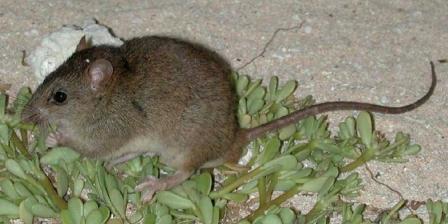
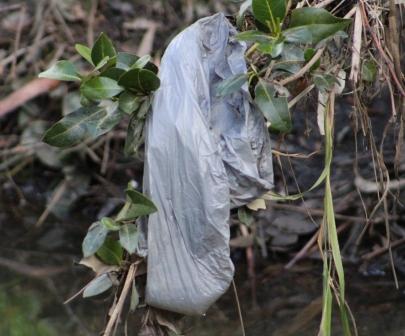
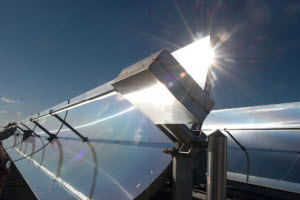 Image: Rooftop concentrating solar thermal collectors power air conditioning systems at Stockland Wendouree
Image: Rooftop concentrating solar thermal collectors power air conditioning systems at Stockland Wendouree